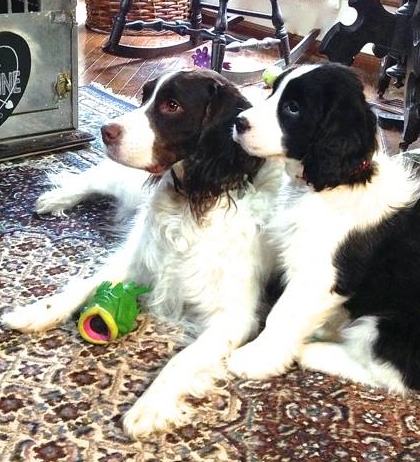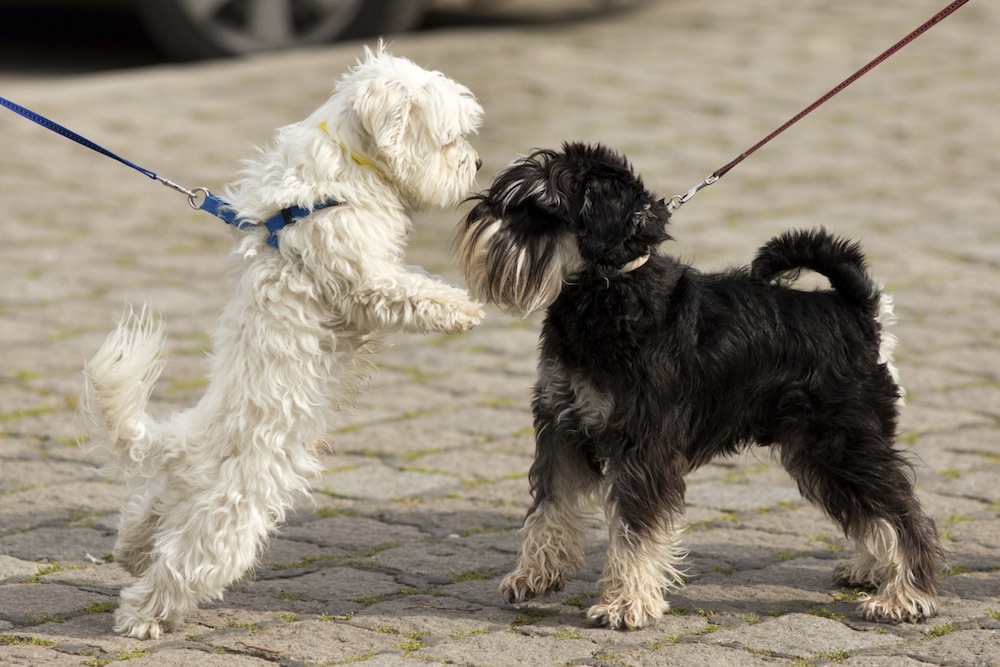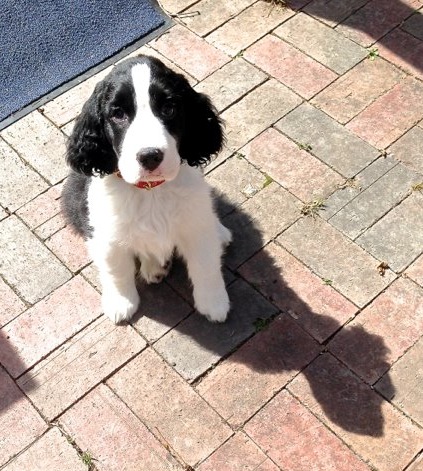
By Sarah A. Ferrell
“It was the best of times, it was the worst of times, it was the age of wisdom, it was the age of foolishness … it was the spring of hope … We had everything before us.”
Charles Dickens could have had the joys and fears of raising the best possible puppy in mind when he penned those opening thoughts in A Tale of Two Cities.
As dog breeders and puppy raisers, we should add, “It was the best advice; it was the worst advice.” How many little pups have endured terrible situations when owners follow bad advice given with good intentions?
To ensure that our pup receives every opportunity for optimal mental and physical development, we often need to stop, take a calming breath, and remember that a good experience from the pup’s viewpoint depends on his or her very individual temperament, prior experience or lack of experience, and the genes that made the pup who he or she is.

Baby steps are best for baby dogs. “Socialize, socialize, socialize!” can become good advice gone bad. Enroll in a puppy kindergarten class where all the dogs are very young, the class is small, and the breeds are evenly matched in size and play drive. Do the class instructors have keen eyes for signs of pup intimidation, overexuberance, or frightened pup responses? Build a foundation for your pup to love to leave home and to delight in other dogs.
Not all classes are managed well for puppy behaviors, nor are all pups screened carefully enough to set the stage for happy learning experiences. Before you take your pup to a class, ask if you may come and watch one in session. Most instructors will be happy to have you. Leave your pup at home until you have seen the size of the class and the size of the dogs in it, as well as the surfaces, noise levels, and type of instruction. Watch class interactions closely, and note any signs of stress in dogs and owners.
Learning to read your pup’s reactions to the expanding world around him is part of your constant process of bonding with him. Each pup is different. If a pup goes toward a situation with a wagging tail and soft eye expression, he probably feels the new experience is safe. If a pup plants his little feet and refuses to take a step toward any new person or object, respect his reluctance. Let the pup take a step back. Let him watch from the sidelines while he works to understand his new world. Pushing him into an experience that frightens him may have the opposite effect from teaching him to be outgoing and accepting of new situations.
Keep play sessions in new places brief. Always leave a new experience with the pup happy to have been there.
Your puppy is not a tool for older dogs to use to reinforce their experience that the world is safe. Have you witnessed an adolescent dog on lead who is dragging his owner full-speed-ahead toward a tiny pup? Usually on the other end the out-of-control owner is shouting, “He’s OK! He loves puppies!”

This is the time to happily pat your leg, sweetly say your pup’s name, and scamper to another spot. You can be friendly and say, “My pup needs a little space!” or give a similar message that you hope will make the clueless dog owner reel in his untrained dog.
The one thing you must not do is offer your inexperienced pup up to be overwhelmed by a dog whose behavior, temperament, and play techniques are unknown to you.
Puppyhood is not the time to make a bucket list of every life experience you want your pup to enjoy and force him into myriad confusing, perhaps noisy, often frightening situations. Have you ever seen a little pup quivering, with eyes rolled back to show the whites, at a loud gathering like a music concert or a fireworks event? Thrusting a young dog into an overstimulating atmosphere can harm the pup, and it will not build his confidence that the world outside his house is safe.

Many stores allow pups to shop with their owners. Rather than taking your pup to a pet store where many dogs go and whose health or vaccination history you have no knowledge of, take him to places where few dogs go, but where he will be allowed to sit in your shopping cart and see the world roll by. National chain hardware stores and many craft stores, garden-supply stores, restaurants with outdoor seating, shopping centers with outdoor benches, and other businesses welcome pups. If your pup is small enough to tuck inside your jacket and both you and the pup are quiet and polite, chances are no one will object to his presence.

As you look into your trusting puppy’s eyes, realize that to him you are the entire world. Tell yourself, “ Easy does it.” Go slowly, with joy for your pup and an eagle eye on the world around him. Show him a world that is safe and calm.

—Sarah A. Ferrell, saf@abrohamneal.com, English Springer Spaniel Field Trial Association (April 2015 AKC Gazette)
Photos of English Springer Spaniel puppy are courtesy the author. For more information on socializing puppies, read Socialize Your Puppy to Fit Your Lifestyle.

